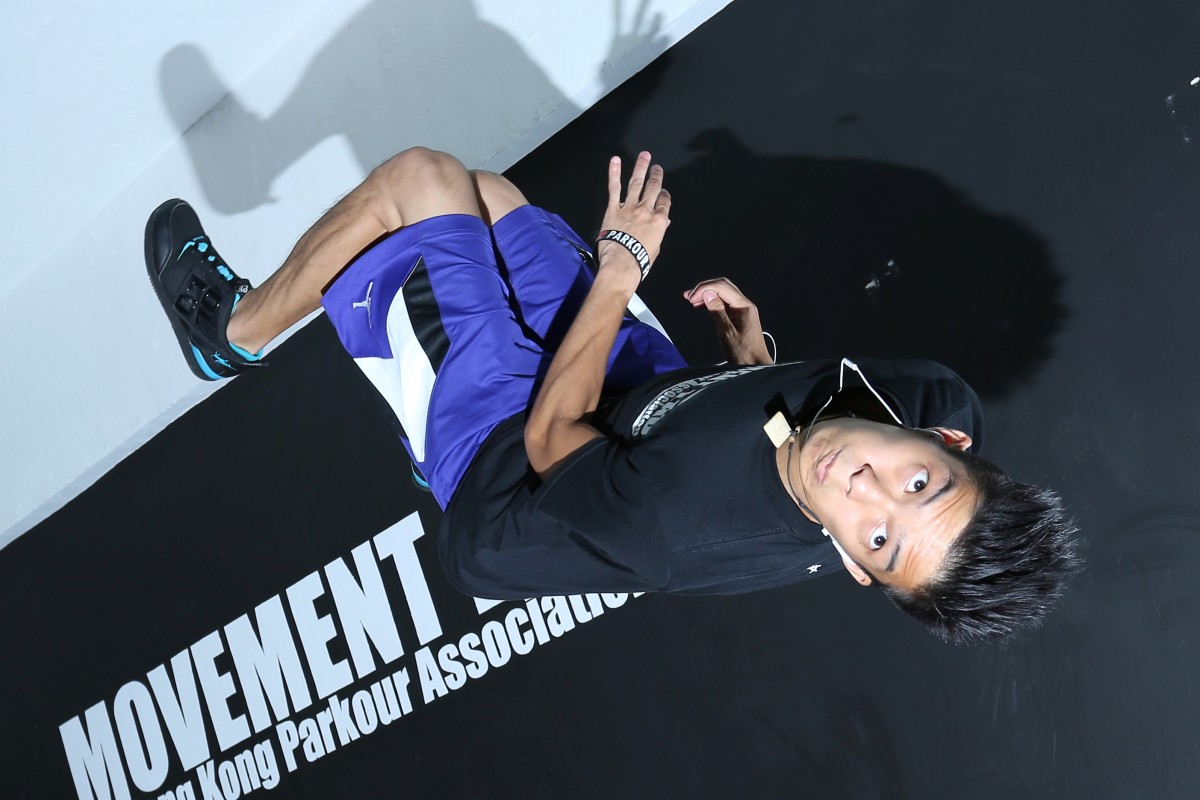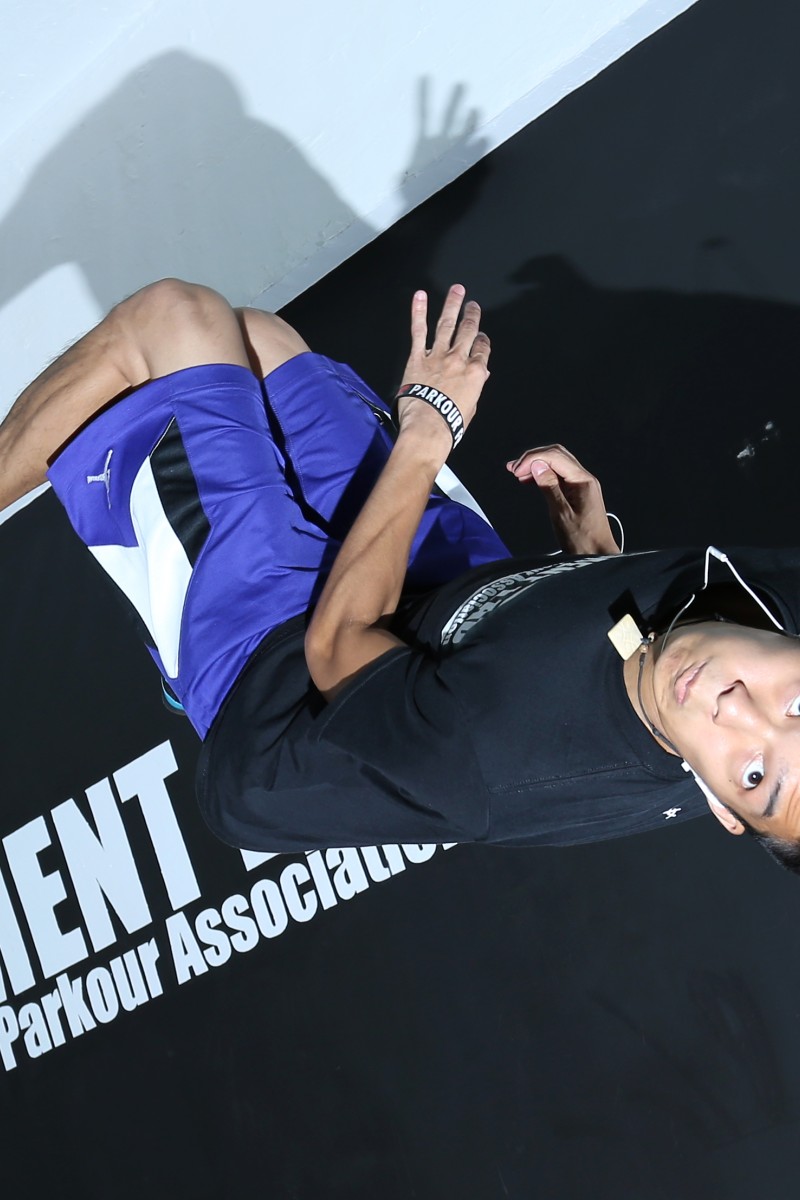 Andrew Tong has mastered some of the challenging flips and tricks.
Andrew Tong has mastered some of the challenging flips and tricks.The law of gravity applies to everything in the universe. Everything, that is, except for the guys at Hong Kong Parkour Association's (HKPA) Movement Lab, who seem to have made it their mission to prove Isaac Newton wrong.
Young Post went to Movement Lab's indoor space to find out the real story behind parkour, an extreme sport which captivates viewers around the world with viral videos featuring amazing stunts.
In the small space located among warehouses in San Po Kong, members of the association warm up with flips, jumps, and physics-defying acrobatics. Coaches Alkon Wong Wai-yin, 20, and Nelson Cheung Kin-shun, 21, do some running back flips off the wall, while member Soames Lee Hong-kiu, 20, launches himself through an obstacle course of boxes and pipes.
Benjamin Wu Wai-ki, 19, a student at the University of Hong Kong, sits down with us on a pile of mats, away from the flying feet, to talk a little about parkour.
"In parkour," he explains, "it's not just about the movement. It's the whole thinking. We need to learn how to think as a way of moving and expressing ourselves."
Parkour, also called free running, grew out of military obstacle course training exercises, and was developed first in France in the late 1980s. Over the past 10 years, it has been gaining popularity in Hong Kong.
Watching the guys in action, parkour seems closer to gymnastics than running. Each flip, leap or jump is executed with graceful, fluid motions. It's surprisingly beautiful to watch. Wu agrees that it's more complex than people might think.
"It's like dance, expressing yourself through movement," he says. "It makes you think creatively."
HKPA only recently opened their indoor space. Previously, they practised on the streets. Wu says: "[For the new space], our aim is to provide instruction and support in a safer setting." The group is there to support and help train the younger members, to teach them how to safely execute the sometimes dangerous moves.
Henry Lai Ho-hang, 14, a student at Hon Wah College, and Andrew Tong Cheuk-yin, 15, of Helen Liang Memorial Secondary School, are the two youngest free runners in the practice space. Both have been with the group for only about a year, but already they have mastered some of the challenging flips and tricks. Andrew says doing flips is very difficult; his favourite move is a front hand spring. Henry finds the sport less challenging, but he admits that he practises whenever he has free time. His favourite trick is a side flip.
Their indoor space may be small, but the group puts every surface to good use. The more experienced coaches and runners give tips to the younger members. HKPA director Daniel Wan Jia-shu, 24, says the group welcomes anyone who wants to give it a try. "We're trying to reach out to whoever wants to learn," he adds. "Not just for parkour, but anyone who wants to try the tricks and movement."
Wu agrees. "We believe parkour is for everyone," he says. "You're only limited by your thoughts. If you think you can do it, you can do it." And apparently the power of thought is stronger than the laws of physics, because these guys defy gravity.
